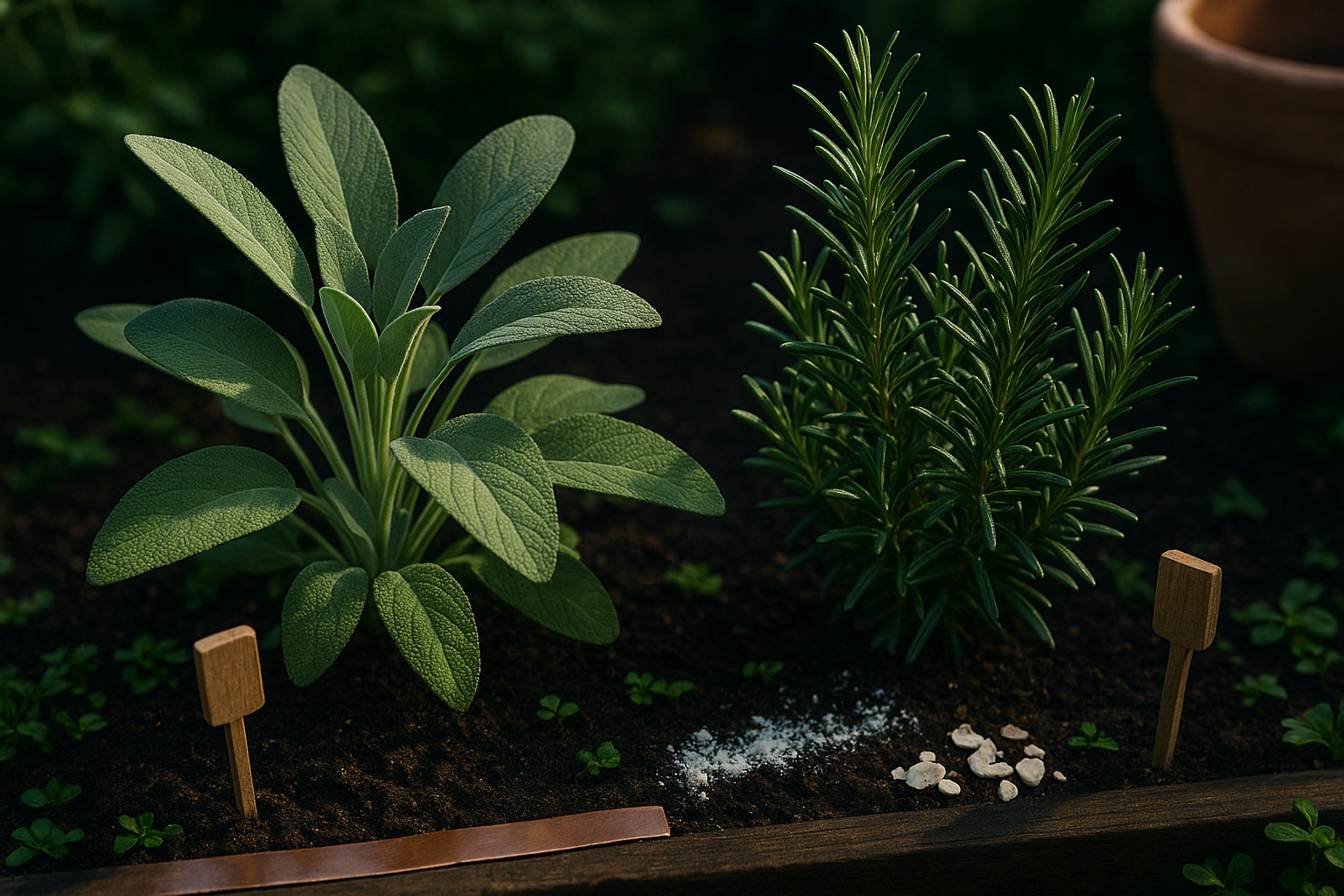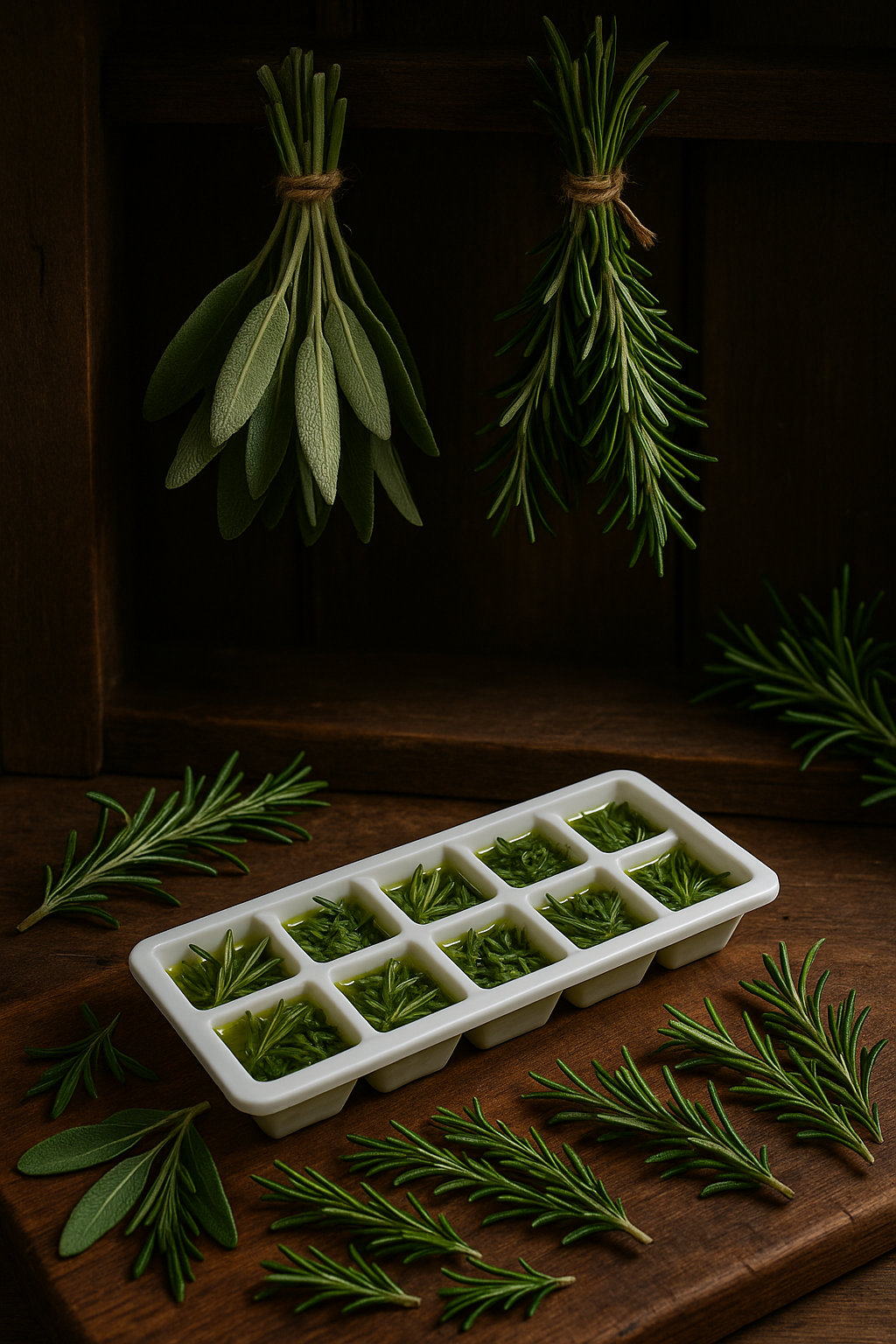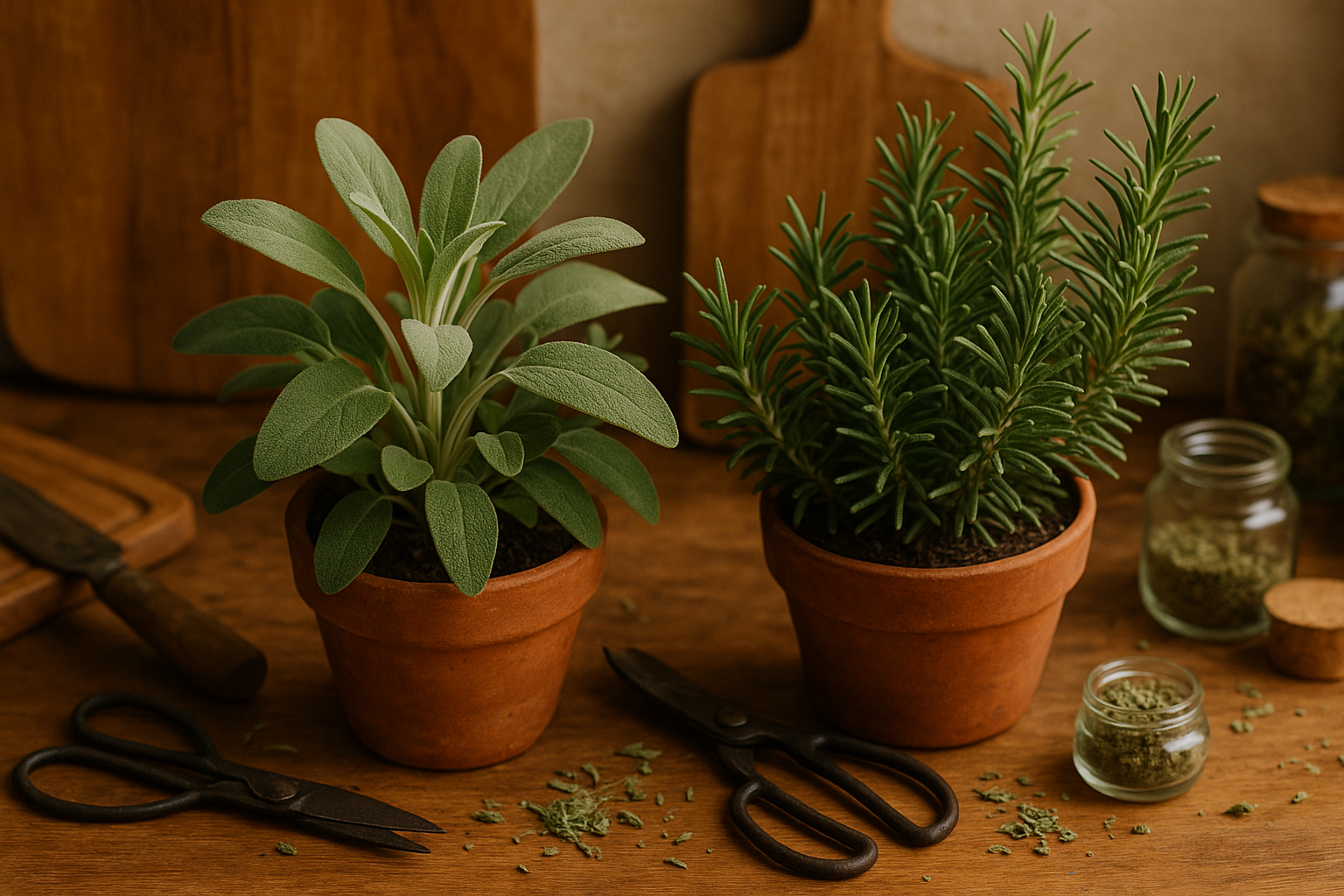Introduction to Sage and Rosemary
When it comes to enhancing flavors in the kitchen or adding beauty to your garden, the debate of sage vs. rosemary often comes up. Both are beloved herbs, celebrated for their rich aromas and versatility, yet many people easily mix them up due to their similar Mediterranean origins and use in recipes. While their leaves may look alike at a glance, sage and rosemary each bring their own unique taste, care requirements, and ideal uses to the table.
If you’ve ever wondered which herb is better suited for your roast or which will thrive in your backyard, you’re not alone. In this article, we’ll break down the key differences between sage and rosemary—how they grow, what they need to thrive, and how best to use each one in your recipes. Whether you’re a home chef or a budding gardener, you’ll find tips to make the most of these fragrant favorites.
Botanical Basics and Plant Characteristics

Sage (Salvia officinalis) and rosemary (Salvia rosmarinus) are both aromatic herbs, but their leaf structure and appearance set them apart. Sage leaves are soft, oval-shaped, and velvety to the touch, with a silvery-green hue that stands out in the garden. When you rub sage leaves between your fingers, they release a warm, earthy aroma, often described as peppery and slightly camphorous.
Rosemary, on the other hand, has narrow, needle-like leaves that are dark green on top with a silvery underside, giving the plant a bushy, upright growth habit. Its aroma is strong, pine-like, and invigorating—perfect for culinary uses.
While both belong to the mint family (Lamiaceae), sage typically grows in small mounds up to two feet tall, whereas rosemary forms taller, woody shrubs that can reach four feet or more. This makes rosemary ideal for hedging, and sage perfect for edging or container gardens.
Growing Conditions and Care
Both basil and oregano thrive in well-draining soil, but basil prefers richer, more moisture-retentive soil, while oregano does best in gritty, sandy mixes that reflect its Mediterranean origins. For sunlight, both herbs need full sun—aim for at least six hours daily—to ensure robust growth and the best flavor.
When it comes to watering, basil requires consistent moisture and should never be allowed to fully dry out, so a routine of regular, even watering is essential. Oregano, on the other hand, is drought-tolerant and benefits from letting the soil dry slightly between watering sessions—overwatering can reduce its intensity and even cause rot.
Home gardeners will appreciate that both herbs are relatively easy to grow, but oregano is particularly hardy and can withstand cooler temperatures and occasional neglect, making it better suited for beginners. Basil is more tender and often grown as an annual in cooler climates.
Watch out for pests and diseases: basil is prone to aphids and fungal leaf spots, while oregano may attract spider mites and suffer from root rot if overwatered.
Culinary Uses
Sage and rosemary each bring distinct flavors to the kitchen. Sage offers an earthy, slightly peppery taste with hints of mint and eucalyptus, making it perfect for rich, savory dishes. Rosemary, on the other hand, has a piney, citrusy aroma with bright, robust notes.
Sage excels in classic pairings like roast turkey, sausage stuffing, and browned butter pasta. Rosemary shines in roasted potatoes, grilled lamb, and focaccia bread.
For preparation, always rinse fresh herbs thoroughly and pat them dry before using. Strip rosemary leaves from the woody stem and chop finely, as its tough texture can overpower dishes if left whole. For sage, remove stems and slice or chiffonade the soft leaves to ensure even distribution.
When substituting dried herbs for fresh, remember that dried herbs are more concentrated—use about one-third the amount. Adding sage early in cooking helps develop its flavor, while rosemary is best added later to avoid bitterness.
Substituting Sage and Rosemary
Sage and rosemary are both aromatic herbs with robust flavors, but they aren’t always interchangeable. You can substitute one for the other in hearty dishes like roasted meats, stuffing, or savory breads—especially if you’re out of one in the middle of cooking.
Since rosemary is stronger and more piney than earthy sage, use about half the amount of rosemary when replacing sage, and slightly more sage if you’re swapping for rosemary’s bolder profile. For example, if your recipe calls for one tablespoon of fresh sage, start with half a tablespoon of rosemary and adjust to taste.
However, avoid substituting in recipes where the distinctive flavor of one herb is the central focus, such as sage butter for gnocchi or rosemary-infused oils; these dishes rely on each herb’s unique characteristics. Taste as you go to strike the right balance, and remember, less is often more when experimenting with herb swaps.
Storing and Preserving Both Herbs

To keep your sage and rosemary fresh, store unwashed sprigs in the refrigerator wrapped loosely in a damp paper towel, then place them in a perforated plastic bag. This method keeps the herbs hydrated without making them soggy, helping them last about a week.
For longer-term storage, drying is a classic and effective approach. Simply bundle small bunches with string and hang them upside down in a dark, well-ventilated space until the leaves are crisp. After drying, strip the leaves and store them in an airtight jar, away from light and heat for maximum flavor retention.
Alternatively, freezing is a great way to preserve potency, especially for rosemary. Chop the herbs and freeze them in ice cube trays with a bit of water or olive oil, making them easy to use directly in cooking. While drying slightly reduces the intensity and brightness of flavor—sage more so than rosemary—freezing helps herbs maintain much of their original aroma and strength.
